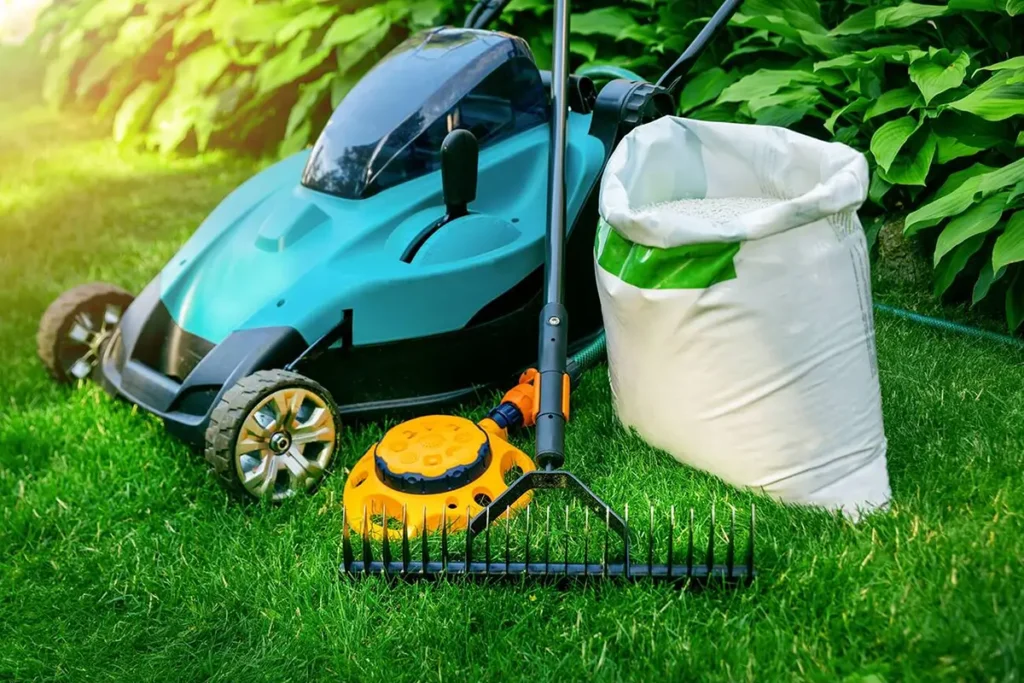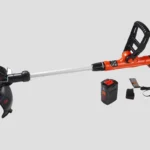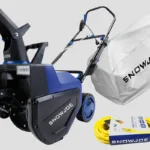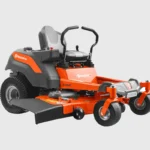When winter’s chill starts creeping in, it’s time to think about more than just cozying up inside. Your lawn care equipment, the unsung hero of your lush summer lawn, needs some TLC before it hibernates for the season. Winterizing your gear isn’t just a “nice-to-do” task—it’s essential for keeping your tools in top shape, ready to roar back to life when spring arrives.
Gather Your Tools
Before diving into the nitty-gritty, make sure you’ve got all the necessary tools on hand. You’ll need a few basics: a wrench, oil pan, fuel stabilizer, cleaning rags, and some elbow grease. Safety comes first, so don’t forget to disconnect the spark plugs to avoid any accidental starts.
Lawn Mowers: The Workhorse of Your Lawn

Let’s start with the lawn mower—it’s probably the most critical piece of equipment you’ll need to winterize.
1. Drain or Stabilize Fuel
Gasoline left in your mower over the winter can turn into a gummy mess, clogging the carburetor and causing rust. You’ve got two options here:
- Drain the Gas: Siphon the gas into a clean container. This is a good choice if you’re storing the mower for more than three months.
- Use a Fuel Stabilizer: If draining feels like a hassle, add a fuel stabilizer to the tank. Run the engine for a few minutes to let the stabilizer circulate through the system. It’s like giving your mower a little energy drink before its long nap.
2. Change the Oil
Old oil can thicken over the winter, leading to a sluggish start in the spring. Here’s a quick step-by-step:
- Warm up the engine to make the oil easier to drain.
- Tilt the mower, so the carburetor is facing up, and place an oil pan underneath.
- Remove the oil drain plug and let the old oil flow out. Once it’s empty, screw the plug back in and refill with fresh oil. Don’t forget to recycle the used oil properly!
3. Clean the Undercarriage and Blade
After a summer of hard work, the mower’s undercarriage is likely caked with grass clippings and dirt. Grab a putty knife and wire brush to scrape off the gunk.
- Remove the Blade: Use a wrench to loosen the bolts and take off the blade. This is also the perfect time to sharpen it—think of it as giving your mower a fresh edge for the next season.
- Reattach and Store: Once cleaned and sharpened, put everything back together and store the mower in a dry, protected spot.
4. Replace Air Filters and Spark Plugs
These small parts can make a big difference in how your mower runs:
- Air Filter: If it’s a paper filter, replace it with a new one. For reusable filters, wash and dry thoroughly before reinstalling.
- Spark Plug: Remove the old spark plug, and check for signs of wear. If it’s corroded or damaged, swap it out for a new one.
Leaf Blowers and String Trimmers: The Finishing Touches
These tools might be small, but they still need proper care.
1. Fuel Management
Just like with your mower, you should either drain the fuel or use a stabilizer. This prevents carburetor damage, which can lead to expensive repairs down the road.
2. Clean and Inspect
- Leaf Blowers: Wipe down the exterior, and remove any debris from the air intake. Consider fogging the engine with oil for added protection.
- String Trimmers: Clean off any grass or dirt, check the line spool, and replace if necessary. A little TLC now will save you headaches later.
Riding Lawn Tractors: Big Machines, Big Responsibility
Riding lawn tractors require a bit more attention due to their size and complexity.
1. Battery Care
Remove the battery and store it indoors in a cool, dry place. Consider connecting it to a trickle charger to keep it in good condition throughout the winter.
2. Check and Inflate Tires
Flat spots can form on tires that sit too long in one position. Inflate the tires to the recommended pressure, and if possible, lift the tractor off the ground to prevent tire damage.
3. Drive Belt Inspection
While you’re at it, inspect the drive belts for any signs of wear. Replacing them now can save you from a breakdown next season.
Chainsaws: Sharp and Ready
Chainsaws can be finicky if not stored correctly. Here’s how to keep yours in top shape.
1. Drain Fuel or Stabilize
As with other gas-powered tools, either drain the fuel or add a stabilizer to prevent engine issues.
2. Clean and Lubricate
- Chain Maintenance: Remove the chain and guide bar. Clean them thoroughly, then soak the chain in bar oil to keep it lubricated.
- Fog the Engine: Spraying fogging oil into the engine helps protect internal components from corrosion.
3. Store Safely
Store the chainsaw in a protective case or cover the bar and chain to prevent damage.
Additional Tips for Winter Storage
1. Proper Storage Environment
Your equipment deserves a good home for the winter. Store everything in a dry, cool place, away from the elements. Cover larger tools to protect them from dust and moisture.
2. Organizing Tools and Accessories
Don’t forget about the small stuff. Store accessories like blades, cords, and safety gear in labeled bins or drawers. That way, you’ll be ready to roll when spring comes around.
Common Mistakes to Avoid
Even seasoned pros can slip up. Here are some common mistakes to watch out for:
1. Leaving Fuel Untreated
Skipping the step of draining or stabilizing fuel can lead to serious carburetor damage. It’s a small task with a big payoff.
2. Ignoring Small Repairs
If your equipment has been acting up, now’s the time to fix it. Don’t wait until spring when repair shops are swamped.
3. Overlooking Battery Maintenance
Batteries can be expensive to replace, so take care of them now to save money later.
Frequently Asked Questions
Q: What if I forget to winterize my equipment?
- A: It’s not the end of the world, but you might face some issues when you try to start your equipment in the spring. Fuel-related problems are common, so be prepared for some maintenance.
Q: Can I use old fuel in the spring?
- A: It’s best not to. Old fuel can break down and cause engine problems. If you used a stabilizer, it might be okay, but fresh fuel is always a safer bet.
Q: How often should I replace my air filter?
- A: At least once a season, or more often if you’re using your equipment heavily. A clean air filter keeps your engine running smoothly.
Conclusion
Winterizing your lawn care equipment might not be the most glamorous task, but it’s one of the smartest moves you can make to extend the life of your tools. A little effort now can save you a lot of hassle and money down the road. So, roll up your sleeves, give your equipment the care it deserves, and enjoy a worry-free winter, knowing your gear will be ready to tackle the grass as soon as spring arrives.

Matthew Dowell
Matthew, a seasoned builder from a family of craftsmen, leads Tools Trove. His passion for tools and decades of hands-on experience fuel his commitment to providing expert reviews and insightful content. Whether you’re a pro or a DIY enthusiast, Matthew’s guidance ensures informed decisions in the world of tools.




